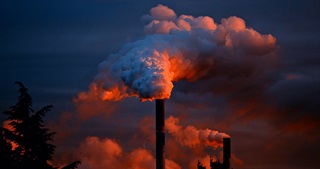LPG, The Powerhouse and Ultimate Solution to the Grave Issue of Pollution
Air pollution is much worse than we thought!!!
It's no secret that climate change is one of the biggest challenges facing the world today. According to the World Health Organization (WHO), an estimated 92% of the world's population lives in areas where air pollution exceeds safety limits, causing millions of deaths a year.
As Einstein aptly put it, "we can't solve problems by using the same kind of thinking we used when we created them". We need to come up with solutions on a high priority basis to combat air pollution and its devastating consequences.
What's India doing in the war against pollution?
Air quality in India has deteriorated significantly over the past two decades; today, air pollution is the second most significant risk factor contributing to the country's burden. Around 97 per cent of the country's population are exposed to particulate matter in excess of the value specified by the World Health Organization (WHO) air quality guidelines.
A strong emphasis on expanding renewable energy, promoting electric, Auto LPG, CNG vehicles, and supplying LPG cooking fuel to millions of households are some examples of India's actions to fight air pollution.
As per the recent guidelines issued by the Indian government, industries running on conventional solid/liquid polluting fuels are given particular timings during the weekdays and are prevented from operating during the weekends. This step emphasises the government's efforts to promote cleaner fuels.

LPS is a clean-burning fuel, and it produces no soot or particulate matter. As a low-carbon, low-polluting fuel, LPG is recognised by governments worldwide for its contribution towards improved indoor and outdoor air quality and reduced greenhouse gas emissions. LPG produces lower oxides of nitrogen (NOX), carbon monoxide (CO), and total hydrocarbon (THC) compared to the other conventional solid & liquid fuels while emitting less carbon dioxide (CO2) and particulates.
LPG demonstrates a 30% reduction in NOx, 85% lower particulate emissions and a 95% reduction in SOx. In addition, compared to diesel, LPG can reduce greenhouse gas emissions by nearly 25%.
If you're concerned regarding high fuel costs and an increase in carbon emissions in your industrial premises, LPG is the right choice as it is considered an exceptional fuel when compared to other fuels like HSD, Furnace Oil, coal etc., due to its higher calorific value and lesser Carbon emissions.
Why opt for LPG?
i) Reduced fuel cost
Using LPG as an industrial fuel reduces the fuel cost compared to other conventional fuels.
ii) Reduced carbon footprint
LPG produces fewer carbon emissions when compared to other conventional fuels, as it is an eco-friendly fuel.
iii) Higher calorific value
LPG has a higher calorific value when compared to conventional fuels, which helps in quick ignition and uniform heating.
iv) Better product quality
When compared to other conventional fuels, products manufactured using LPG as industrial fuel have better quality.
Why SUPERGAS?
SUPERGAS has been one of the leading Industrial LPG Suppliers in the country since 1996 and offers comprehensive LPG storage installation services from designing to commissioning. SUPERGAS offers customised solutions based on space availability, application and technology. Not only that, SUPERGAS does facilitate conversion from liquid fuels like HSD and LDO because of price, carbon footprint, convenience and ease of operation. With,
i) Operational and Safety training
ii) Dedicated Sales Team
iii) Conversion assistance
iv) Customised storage solutions
v) Technical support and
vi) Reliable infrastructure & supply chain,
vii) SUPERGAS is a team at your disposal!

 }
}
 }
}
 }
}
 }
}